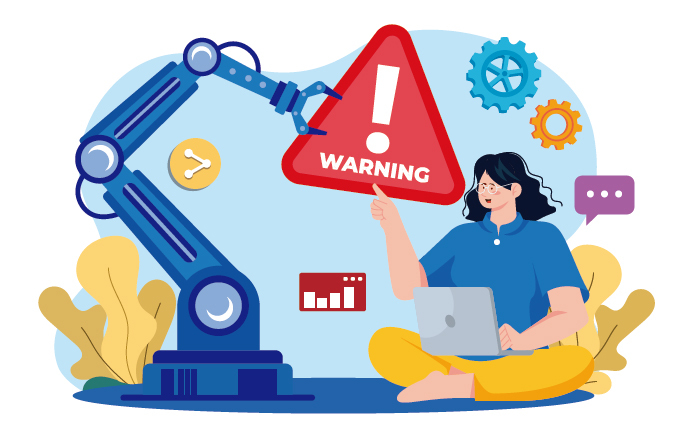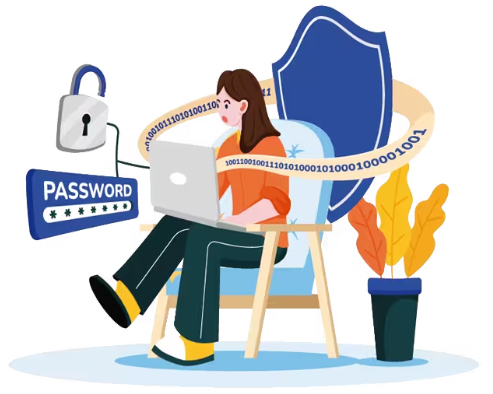What is DNS Spoofing and how to prevent DNS poisoning attacks
August 6, 2025 | Jordi Genescà Prat

DNS resolution is one of the most critical and vulnerable elements of the Internet's infrastructure. Any failure or manipulation in this system can directly affect the availability, integrity, and security of an organization's web services.
Among the most common and dangerous attacks are DNS Spoofing and DNS Poisoning. Both aim to manipulate domain name system responses to redirect users to fake websites or intercept their traffic, for purposes ranging from credential theft to malware distribution.
This article explains how these attacks work, the potential consequences for companies and users, and the available solutions to effectively prevent them.
What is DNS Spoofing?
DNS Spoofing (also known as DNS forgery) involves intercepting or manipulating DNS responses so that the user is directed to an IP address different from the legitimate one, without noticing. For example, a victim might type www.company.com into their browser, but be redirected to a visually identical fake site controlled by the attacker.
This type of attack often exploits structural vulnerabilities in the DNS protocol, such as lack of encryption, unauthenticated responses, or predictable identifiers. While DNS was designed to be fast and lightweight, it did not originally include robust security mechanisms. As a result, if a DNS server accepts responses without cryptographic validation, an attacker can inject false data relatively easily.
These vulnerabilities can be worsened by poor configurations, outdated software, or unprotected public networks.
What is DNS Poisoning?
DNS Poisoning or DNS cache poisoning is a more persistent variant of spoofing. In this case, the attacker inserts false records into the cache memory of a legitimate DNS server. As a result, any user querying that domain through that server will receive a false address, even days after the attack.
This kind of poisoning can affect many users and have a direct impact on brand credibility, web traffic, and security. It may also be part of a broader attack, such as phishing, identity theft, or malware installation.
Risks for businesses
- Loss of user trust:
if users land on fake websites that imitate the company's brand. - Credential and data theft:
especially if victims enter information into corporate forms or systems. - SEO impact:
due to failed visits, penalties, or loss of domain reputation. - Brand misuse in fraud:
used to deceive clients, suppliers, or employees. - Internal service compromise:
for companies that rely on DNS to access internal systems.
How to prevent these attacks
1. Implement DNSSEC
DNSSEC (Domain Name System Security Extensions) is an extension of the DNS protocol that allows validation of DNS responses through cryptographic signatures. With DNSSEC enabled, an attacker cannot alter responses without the system detecting them as invalid.
2. Use trusted resolvers and constant monitoring
Use secure, up-to-date DNS resolvers and monitor their behavior to detect suspicious activity or poisoning attempts. Early warning systems allow quick responses to anomalies.
3. Reinforce with Anycast networks
DNS architectures based on Anycast, such as DNS Anycast Plus, distribute queries across multiple global servers, reducing the likelihood of successful man-in-the-middle or spoofing attacks.
The redundancy and geographic spread of nodes strengthen DNS system resilience.
4. TTL policies and record validation
Limiting DNS record time-to-live (TTL) values reduces the exposure window to poisoned data. Regularly reviewing and validating records helps detect inconsistencies.
Recommendations for companies
Any company with an online presence should assess its exposure to DNS-level attacks.
- High-traffic websites:
eCommerce, content platforms, SaaS providers. - Organizations handling sensitive data:
law firms, clinics, insurers, educational institutions. - Organizations with remote internal services:
distributed teams, international offices, hybrid environments. - Well-known brands:
likely to be used as bait in phishing or spoofing attempts.
An invisible tool with a critical role
DNS is invisible to most users, but plays a critical role. Attacks like DNS Spoofing or DNS Poisoning can disrupt services and seriously damage a company's reputation and security.
Being proactive is essential. DNS security cannot wait for a crisis.











